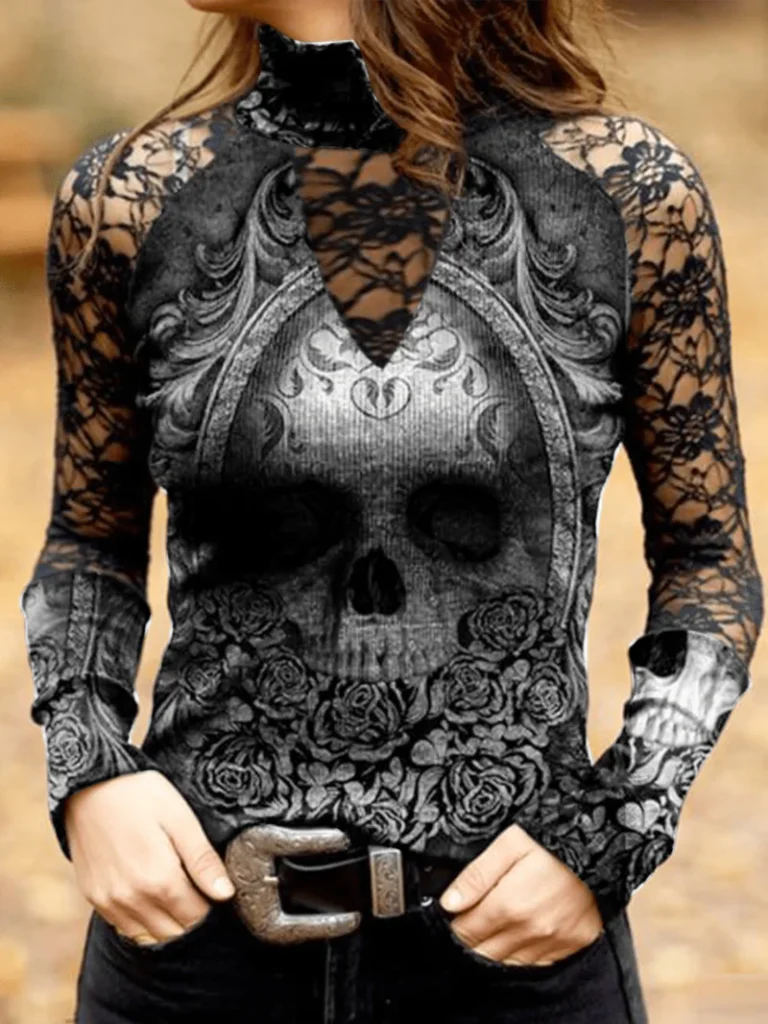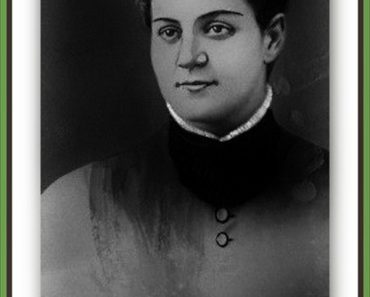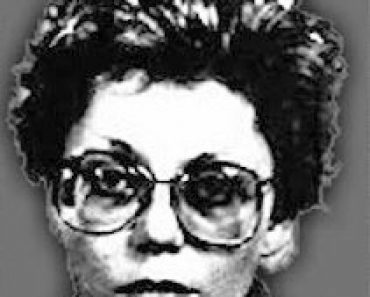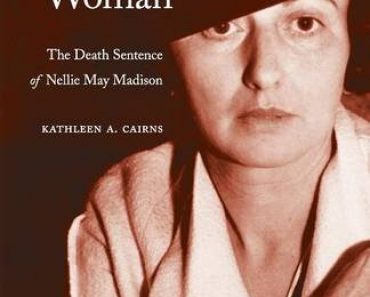Marie Noe | Wicked Women
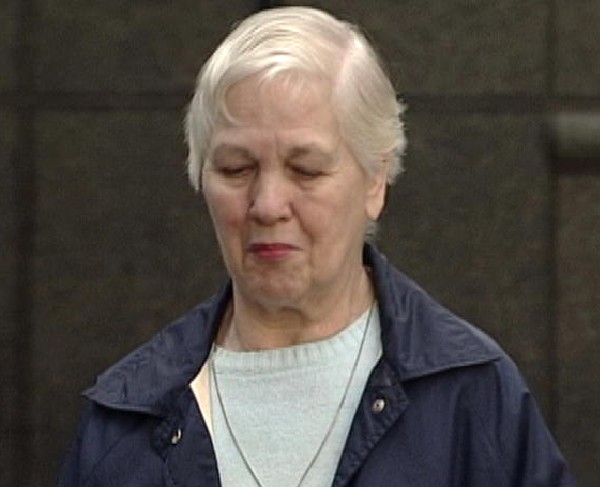
Marie Noe
Born: 08-23-1928
Serial Filicide
American Female Serial Murderer
Crime Spree: 1949 – 1968
Death: 05-05-2016 (87 years old)
Marie Noe is an American serial murderer. She was convicted in June 1999 of murdering eight of her children. Between 1949 and 1968, eight of the ten Noe children died of mysterious causes which were then attributed to sudden infant death syndrome. All eight children were healthy at birth and were developing normally. Two other children died of natural causes. Noe pled guilty in June 1999 to eight counts of second-degree murder and was sentenced to twenty years’ probation and psychiatric study.
Early Life of Marie Noe
Marie Noe was one of several children born of her parents’ troubled marriage. Marie contracted scarlet fever at age five, which she later credited as the cause of learning difficulties. She dropped out of school as a young teenager to work and help care for a niece, born to one of her older sisters when Marie was 12 and raised as Marie’s sister.
The Noe Children
Marie and Arthur Noe met at a private club in the West Kensington neighborhood of Philadelphia. After a brief courtship, the couple eloped. The couple proceeded to have ten children, all of whom died between the ages of 5 days and 14 months.
Baby Noe One
Noe baby number one was Richard Allen. Richard was born on March 7, 1949. He weighed in at seven pounds, eleven ounces. He was discharged five days after birth in good health. Little Richard however did not gain weight quickly. When he started vomiting too often, Marie took him to St. Christopher’s Hospital for Children, where he was briefly admitted for “colic.”
Exactly one month after his birth, the baby was discovered dead by his father, when he came home from working the night shift. Marie too was in the room, asleep in bed, when Art found the child in the bureau drawer the couple used as a crib. Arthur ran with baby to a neighbor’s house, who drove them to Episcopal Hospital, where the infant was pronounced DOA. Cause of death attributed by the coroner was “congestive heart failure due to sub acute endocarditis,” a condition very rarely found in children. There was no autopsy.
Baby Noe Two
Noe baby number two was Elizabeth Mary. Elizabeth was born September 8, 1950, at Northeastern Hospital, weighing in at seven pounds, ten ounces. A normal full-term birth, although Marie was hospitalized four separate times with false labor in her latter months of pregnancy.
There were no records of any major health problems with the little girl until 1951, when the five-month-old, was found by Marie in her crib in the dining room, vomiting milk mixed with blood. Marie, who had just brought the baby downstairs and given her a bottle, phoned police and woke her husband, who was sleeping upstairs.
The rescue squad took the baby to Temple Hospital but the child was DOA. The cause of death, attributed by the coroner, was bronchial pneumonia. According to autopsy notes, this finding, which can only be confirmed microscopically, was made without any documented internal examination. The case was briefly investigated but no notes were taken and the sad fact was a second baby was simply dead.
article continued below
article continued below
Baby Noe Three
Noe baby number three was Jacqueline. Jacqueline was born April 23, 1952, at Episcopal Hospital, weighing in at 7 pounds, 2.5 ounces. There were no records of health problems for the new baby until 21 days after her birth, when she was found by her mother vomiting and turning blue.
Jacqueline was taken to the Episcopal Hospital. Like the brother and sister before her, she too was DOA. The cause of death attributed by the coroner was “inspiration of vomitus.” An autopsy was performed, but the notes were either discarded later after a brief investigation or were simply not taken down in the first place. And an actual internal examination may or may not have been done at all. Again, the Noe’s had lost another child to a death they could not understand or explain.
Baby Noe Four
Noe baby number four was Arthur Jr.. Arthur Jr. was born April 23, 1955, at Episcopal Hospital. He weighed 7 pounds, 11.5 ounces. Only 12 days later, Marie found the infant having difficulty breathing. She took him to the hospital at once. The baby was examined and found to be in good health. Mother and baby were sent home.
The next day however, Marie Noe, home alone again, found the baby not breathing and called the rescue squad. The team rushed the child to the Episcopal Hospital but the infant arrived DOA. Cause of death attributed by the coroner was again bronchial pneumonia. A fourth baby born, a fourth infant funeral to attend.
Baby Noe Five
Noe baby number five was Constance. Constance was born February 24, 1958, in St. Luke’s Hospital. The little girl weighed in at seven pounds, eight ounces. Constance was born with conjunctivitis but it cleared quickly and mother and daughter were discharged.
One treating physician later recalled a strange interaction he had with Marie Noe before leaving the hospital. When informed that he would be helping with her baby’s care, Marie replied flatly, “What’s the use? She’s going to die just like all the others.”
On March 19, Marie Noe called the family doctor to report that the baby was having trouble breathing. After making a house call, the doctor had the baby taken to the hospital because, although the problem seemed simply to be a cold that didn’t respond to medication, he wondered if something might be lacking in the infant’s blood.
After three days of observation and testing, the baby was discharged in good condition. Two days later, however, the baby’s father returned home from St. Hugh’s Catholic Church, were he had been taking instruction so his marriage, an elopement, could be properly sanctified and his one-month-old daughter could be baptized, to find the baby lifeless in her crib. When Arthur pressed on baby’s abdomen in an effort to resuscitate her, milk curds came out of her nose and mouth. He called the rescue squad and the baby was taken to Episcopal Hospital. She arrived DOA. This time the cause of death was withheld 45 days for a thorough investigation by the police because these parents had already lost four other children.
article continued below
Queen Size Coverlet
Made of high-grade 100% poly-cotton
Faded and Pilling Resistant
Sophisticated Design
Unique Pattern
All Season Suitable
Versatile
Soft
Vivid Colors with Eye-Catching Design
Available in Queen Size
Beautiful and practical.
article continued below
Marie Noe
Dr. Molly Dapena was asked to do the autopsy on Constance Noe. She quickly decided that the on-scene diagnosis of Constance was wrong. The vomit, she believed, wasn’t the cause of death but more likely the result of death. The autopsy, however, didn’t reveal what had caused the death, so Dapena proceeded with extensive microscopic tissue examination and toxicology. Both came back negative.
In the meantime, interviews were conducted by the police and investigators from the OME, who mostly asked questions about the parents’ health. They learned that Mr. Noe had a history of ulcers and was chronically underweight, weighing less than 100 pounds. Marie Noe was described as “slow in answering questions, constantly calling upon her husband to help her and appeared either hypothyroid or under par mentally”.
With nothing more to go on, Dapena and the medical examiner had what records describe as “a long discussion” about what the official cause of death should be, and finally agreed it should be signed out as “Undetermined, Presumed Natural.”
Marie Noe was soon pregnant again, but her sixth baby, Letitia, was delivered stillborn at 39 weeks due to knotted cord, August 24, 1959, at St. Lukes Hospital. The body was turned over to the hospital’s anatomical board for medical study.
Baby Noe Seven
It was nearly three years before baby Noe number seven came into the world. Mary Lee, was born June 19, 1962, at St. Joseph’s Hospital, weighing in at six pounds, eight ounces. The baby was delivered at 36 weeks by cesarean section and Marie experienced severe vascular collapse and anemia.
Mary Lee was kept in the hospital for one month, although it is unclear if there was a respiratory problem, as Marie would later state, or whether the new family physician, Dr. Columbus Gangemi, and the obstetrician, Dr. Salvatore Cucinotta, just wanted to observe the child first hand.
Mary Lee had no more hospital stays but Marie did call Dr. Gangemi as often as four or five times a day. She was either seeking his advice and complaining that the baby “was getting on her nerves.” He later described her to investigators as a “highly nervous and excitable individual but emotionally flat where the deaths of her children were concerned.”
The Death of Mary Lee
On January 4, 1963, Arthur and Marie were awakened by the sound of Mr. Noe’s elderly parents, who lived with them, fighting. Marie took Mary Lee to her own mother’s house down the street and returned several hours later to collect her. When she returned to the house, Marie put the baby down to sleep. When she later looked in on the little girl, she found her gasping for breath and turning blue. Marie called police and the rescue squad delivered the baby to Temple Hospital. She was DOA.
Marie then called Dr. Gangemi, who remembered her saying, without emotion, “Mary Lee is dead.”
article continued below
article continued below
Growing Suspicion
Police took Arthur and Marie Noe to the 25th District precinct, where they were interrogated and released. In the meantime, an extensive autopsy was done by medical examiner, Dr. Halbert Fillinger, who was suspicious about the baby’s death, but just as concerned about the fact that Marie Noe was pregnant yet again. And he was not alone. Halbert and Molly Dapena both felt that someone should get involved in the Noe situation. They arranged for a grant that would allow St. Christopher’s to offer the Noes free prenatal and postnatal care, delivery and hospitalization if they allowed their baby to be studied genetically and monitored. Marie and Arthur said no.
Baby Noe Eight
In April, the official cause of death for Mary Lee was announced as simply “undetermined,” rather than the previous “undetermined, presumed natural.” Then, in late June, Marie Noe went into premature labor, and at 38 weeks, Theresa, at just six pounds, was delivered by cesarean section at St. Joseph’s Hospital. The baby, whom the mother apparently never saw, died in the hospital after only six hours and 39 minutes.
While waiting for the autopsy findings on Theresa, Marie Noe became the most famous bereaved mother in America. A Life Magazine story, Marie and Art had been interviewed for just after Mary Lee died, was finally published in the July 12, 1963, issue. They were referred to in the article by pseudonyms, but since the case had already received some local media attention, their identities became obvious to many people in Philadelphia.
Several weeks after the article appeared, the autopsy results on baby Theresa were released. Cause of death was attributed by the medical examiner to a blood disorder, congenital hemorrhagic diathesis. The problem hadn’t been found in any of the other children, or the parents.
In the meantime, the Noes had been busy taking care of Art’s increasingly senile and infirm parents, who’d lived with them now for several years. Arthur’s father had died the day before Theresa’s birth and death. His mother was hospitalized soon after and went from the hospital to a private nursing home. She died in June 1964.
By that time, Marie Noe was pregnant again.
Baby Noe Nine
Catherine Ellen Noe, baby number nine, was born on December 3. She came into the world at St. Joseph’s Hospital by cesarean section weighing in at seven pounds, seven ounces. This time, the apprehensive doctors were taking no chances. Cathy was kept in the hospital for three months, even though she was perfectly fine. She was also given every possible diagnostic test to prove her health. Plus, the hospital staff could, and did, keep a watchful eye on the Noes.
Suspicions
Many of the nurses in the pediatrics department of the hospital were nuns and the supervisor of the department was a young Sister Victorine, who developed a close attachment to little Cathy. She gave a statement to investigators at the time that Cathy was “a happy baby” with “no problems of any kind” during her entire hospital stay. She did, however, observe that when the parents came to visit, “Mr. Noe always was much more affectionate than Marie was. She, on the other hand, seemed to prefer to remain detached from her child.
Sister Gemma, Sister Victorine’s nursing colleague, said that not only did Marie Noe have an “apparent inability to establish a normal maternal rapport with her child,” but “there were times when she acted like two distinctly different people.”
Victorine also noted that whenever the nurses allowed Marie Noe to feed the baby, she would always bring the food back to them claiming she couldn’t get her to eat much. Yet after Marie would leave, the nurses would feed Cathy, who would consume all her food eagerly. On one occasion, Sister Victorine overheard Marie say to the baby while trying to feed her, “You better take this or I’ll kill you!”
article continued below
prime video | start your free trial today
Watch All Your Favorites On Prime
Review Our Affiliate Disclaimer
article continued below
Cathy Goes Home
Cathy was discharged in the early spring of 1965. In preparation, Dr. Gangemi hypnotized Marie Noe and gave her posthypnotic suggestions he hoped would instill confidence in her ability to raise the child and reduce her anxiety over the baby’s crying. He was pleased to see that it seemed to work for a while.
But that soon ended and Marie Noe eventually began calling Dr. Gangemi again. Then, on August 31, just after the family had returned from vacation, Marie she called the doctor claiming to have discovered Cathy in her crib, choking on a dry-cleaning bag. She said the baby had pulled the bag off one of Art’s suits that was hanging in a nearby closet.
Dr. Gangemi, who had just about had enough of Marie Noe, snapped angrily at the distraught woman on the phone. How the hell had an 8 month old reached out and snagged a large sheet of plastic off of a suit hanging in the closet? Gangemi ordered Marie to take Cathy to the hospital immediately.
Happy Baby Again
Cathy survived the bizarre ‘accident’ but was kept in the hospital for five weeks. During this hospitalization, it was again noted that Marie Noe had trouble feeding her daughter and that Mr. Noe was the more affectionate of the parents.
Six weeks after Cathy was sent home, Marie once again called the rescue squad, claiming that the child had “gone limp in her arms” while carrying her down the street. Cathy was once again taken to St. Joseph’s Hospital. She was kept there for three more weeks, celebrating her birthday on the ward with her mother and several of the nuns. Photos from that day show what appears to be a perfectly normal, happy and healthy toddler. But a week and a half after being discharged, and just two days before Christmas, Cathy was brought back to the hospital after having what Marie Noe called “a spell.”
By this time, the doctors and nurses treating Cathy had made some disturbing observations about these hospital visits. The baby would be crying terribly upon admission but would apparently realize she had nothing to fear from those in the hospital and would calm her tears. There never seemed to be anything physically wrong with the little girl that would explain her distress. Likewise, she never had a “spell,” or displayed any other new symptoms, while in the hospital. Everyone was perplexed as well as worried.
Protecting Cathy
At discharge, some three weeks later, the Noes bought an inexpensive oxygen delivery system. Mr. Noe also put a screen door on Cathy’s bedroom so they could look in whenever they wanted, and he placed a walkie-talkie next to the crib, with the “talk” button taped down so they could hear her at all times.
The day Cathy returned home, the Noes celebrated a belated Christmas. Ten days later, while Art was out having a beer, Marie found the baby having what she described as “a slight seizure,” and gave her oxygen. Two weeks after that, on Valentine’s Day, Marie said she had just finished doing the laundry when she checked on Cathy, who was napping in a playpen, and found her turning blue. She said she tried to give the child oxygen, but her “tongue was between her teeth and her jaws set tight.” She called Gangemi, who made a house call. While he could find no reason for Cathy’s reported condition, he prescribed a liquid version of the anti-seizure medicine Dilantin.
On the morning of February 25, 1966, Marie Noe again found Cathy unconscious in her playpen. She ran to her neighbor, who drove them to Episcopal Hospital. Cathy was DOA.
Ninth Dead Baby
At 2 p.m. that day, Joe McGillen and his partner, Remington Bristow, arrived at the Noe home to discuss the ninth dead child.
The two investigators looked around and then spoke to both parents, who had asked a lawyer neighbor to be present. While Bristow spoke with Marie Noe in the kitchen, McGillen chatted with Mr. Noe upstairs in the bedroom. According to the report to the medical examiner, Mr. Noe “admitted that it must naturally look suspicious but he insists that he has never entertained the slightest doubts about his wife in this respect.”
But investigator Bristow had some serious doubts.
Who Was Marie Noe
A psychiatric profile of Marie Noe was emerging from the dozens of interviews the investigators conducted in the neighborhood where the Noes lived and from the decades of family hospital records they were subpoenaing.
Family physician Gangemi told investigators he regarded Marie Noe as “an unstable schizophrenic personality who quite possibly is psychotic.” He also said that she “loves attention,” and when she was being treated for a while by a psychiatrist, “she seemed to make constant reference to this treatment as if all of this concentrated attention made her some sort of celebrity.”
Investigators could not locate any records of this treatment, although Marie does recall attending several psychoanalytic sessions at Temple. Art recalls joining her at one session, but he never returned because “it got too personal about lovemaking.”
McGillen and Bristow did, however, eventually locate a 1949 treatment record concerning the time Marie Noe went blind.
Only 12 days after her first baby died, 20-year-old Marie Noe was taken to the hospital by her husband. The doctor who examined her agreed she was completely blind. The physician decided the condition might be “conversion hysteria.” A psychiatric consultant confirmed the diagnosis, assuming the problem had been triggered by the baby’s death. What Marie apparently did not reveal to her doctors was that she had been experiencing temporary blindness for years. She recalls briefly going blind before she got her period almost every month, ever since her first menstrual cycle at 14. She associated this blindness with headaches, which she also got prior to menstruating every month.
The Insurance Policies
In the meantime, Joe McGillen was busy investigating a new angle. He was checking into the Noes’ finances, and closely into the insurance policies they’d taken out on the babies. Before working for the medical examiner, McGillen had worked at a company that investigated life insurance claims and knew it wasn’t unusual for parents to insure infants in those days. He discovered that of the seven Noe children, who had actually come home from the hospital, there was evidence that at least six had been insured. The first few had been insured for only $100, but from baby number four on, each was insured for over $1,000.
The company that paid out claims on Arthur Jr., Constance and Mary Lee had rejected the Noes’ application for a $1,000 policy on Cathy, but Arthur, who worked on the side as a ward committeeman in North Philadelphia, was apparently able to use political connections to find another company to write a $1,500 policy. The application was taken in September, while Cathy was still in the hospital after the dry-cleaning-bag incident. Baby Cathy died exactly three months after the policy was issued, and the company promptly refused to pay the claim.
Baby Noe Ten
The Noe’s then considered adoption. Even though the Noes had been told when they made their application that it would take at least nine months to get a child, they couldn’t understand why the church was taking so long to get them a baby. In the end it wouldn’t matter though. Before the nine months were up, the adoption wait was over. McGillen learned that the Noes had withdrawn their application. Marie Noe was pregnant again.
Arthur Joseph Noe, Little Arty, the second baby named Arthur, was born on July 28, 1967, at 9:57 p.m., in St. Joseph’s Hospital. He weighed eight pounds, five ounces. The delivery was by cesarean section, complicated by the rupture of Marie Noe’s uterine wall. Dr. Cucinotta removed her uterus in order to save her life.
Little Arty
Cucinotta handed the newborn to Dr. Patrick Pasquariello, who, like most of the staff, was very suspicious of the Noes. So, during the two months that Little Arty was kept in the hospital, the staff had plenty of time to observe him. As Gangemi noted emphatically on his chart, “The child appears normal in every respect. NEVER has this child displayed any respiratory difficulties as described by the mother in her other now-deceased infants.”
The attentive hospital staff did not get much of an opportunity to observe the Noes this time, however. According to a medical examiner’s review of the baby’s chart, during the entire two months that Little Arty was in the hospital, the mother and father visited him only two times.
Arthur Noe was discharged from the hospital on September 29, 1967. At the end of his discharge note, Gangemi wrote: “In God We Trust!”
One month later, Gangemi got a call from St. Christopher’s Hospital that baby Arthur Noe had been brought in by the rescue squad. Marie Noe, who had been home alone with the baby, said that while she was feeding Little Arty, “something must have gone down the wrong way,” and he began choking and turning blue. She said she “banged it out of his chest,” called the rescue squad and gave him mouth-to-mouth resuscitation. By the time the baby arrived at the hospital, he was “pale but not blue and in no apparent respiratory distress.” Gangemi ordered the baby admitted and Little Arty stayed in the hospital for 19 days.
Except for a stuffy nose, the baby was fine. Chest and head X-rays were all normal. The only thing abnormal noted on the chart was the number of times the parents visited their only child. It said that Marie showed up once, but only after being asked to come in concerning a bill. Arthur didn’t visit at all.
Another Dead Baby
Five weeks after discharge, the baby was rushed to the emergency room at St. Christopher’s, this time by police. According to the chart, Marie Noe explained that “the family cat laid across the baby’s face causing him to turn blue.” Little Arty was promptly revived with oxygen and the E.R. doctor’s assessment was that this was a “possible attempted suffocation.” Still, the baby was sent home to be with his family for the Christmas holiday just four days away.
Eight days later, just after 4 p.m., the rescue squad took Little Arty to the St. Christopher’s emergency room, DOA. He had been found by his mother. Within hours, police and medical examiner investigators were at the Noe home, reading the couple their rights. This time they did not have an attorney present. Marie Noe said she did not feel she needed one. ”I have nothing to hide,” she said, “ and I will tell you everything I can possibly remember.”
According to her statement to police, the baby “didn’t cry out.” But, when she entered the bedroom, the baby was “face up, gasping for breath and turning blue.” She said she immediately lowered the side of the crib and started mouth-to-mouth resuscitation. When it did not appear to be doing any good, she called the rescue squad, went downstairs with the baby and placed him on the kitchen table. Then she called her husband and waited for the rescue squad to arrive. When they did, Little Arty was already dead.
When questioned, Mr. Noe had little to add, except to say, “I have no idea why this is always happening to us. I wish to God I did.”
article continued below
WickedWe Suggests:
Cradle of Death
Ten Babies. Eight Murders. One Killer.
Marie Noe was an American woman who was convicted in June 1999 of murdering eight of her 10 children between 1949 and 1968. Had she been the recipient of the worst medical phenomenon imaginable or had she truly perpetratrated the largest case of maternal infanticide in American history and walked away without jail time.
article continued below
Under Investigation
The Noes knew they were being investigated, even being followed in their neighborhood. In the meantime, the medical examiner was telling the press that there was nothing suspicious about the ten dead babies of Mr. and Mrs. Noe. Spelman says he found absolutely no evidence indicating any were unnatural deaths.
The Noes were led to believe that any suspicions about them disappeared when they passed the polygraphs. They were given the lie detector test and released. But that was obviously not the case.
Marie Noe
Following the death of their 10th child, Arthur and Marie attempt to get on with their lives. After years of working in factories and serving as a local committeeman on the side, Mr. Noe was able to get a string of low-level political patronage jobs with the city. Marie, whose migraines disappeared after her hysterectomy, became a local committeewoman. They became more active in the church and, by their own admission, grew closer than they had been while having children.
Marie Noe Pleads Guilty
However, on August 5, 1999, Marie Noe, was arrested at her Philadelphia home. She was charged in the smothering deaths of eight of her 10 children, none of whom had survived beyond 14 months of age.
Marie finally admitted, and pleaded guilty to eight counts of second-degree murder. She said she had smothered her children with a pillow. A plea agreement was reached and Marie Noe was sentenced to 20 years of probation with the first five years under house arrest. As a condition of her plea agreement, Marie agreed to psychiatric study in hopes of identifying what caused her to kill her children.
In September 2001, a study was filed with the court that stated they had ruled out neurological problems, Munchausen Syndrome by Proxy and multiple personalities for Marie Noe. They had concluded rather that she suffered from mixed personality disorder, including avoidant, dependent, narcissistic, histrionic, borderline paranoid and anti-social traits.
What Happened To Marie Noe
After her conviction of the largest maternal homicide case in recorded history, Marie Noe continued to live quietly with her husband until his passing, just two days after Christmas, in 2009. Marie lived for six more years, dying on May 5, 2016, at the Cheltenham Nursing and Rehabilitation Center.
source: wikipedia.org | murderpedia | crimemuseum.org | phillymag.com | history.com
This site contains affiliate links. We may, at no cost to you, receive a commission for purchases made through these links
WickedWe Suggests:























































